基本思想:手中有一块微软的深度相机,结合手册和逻辑写个代码测试一下
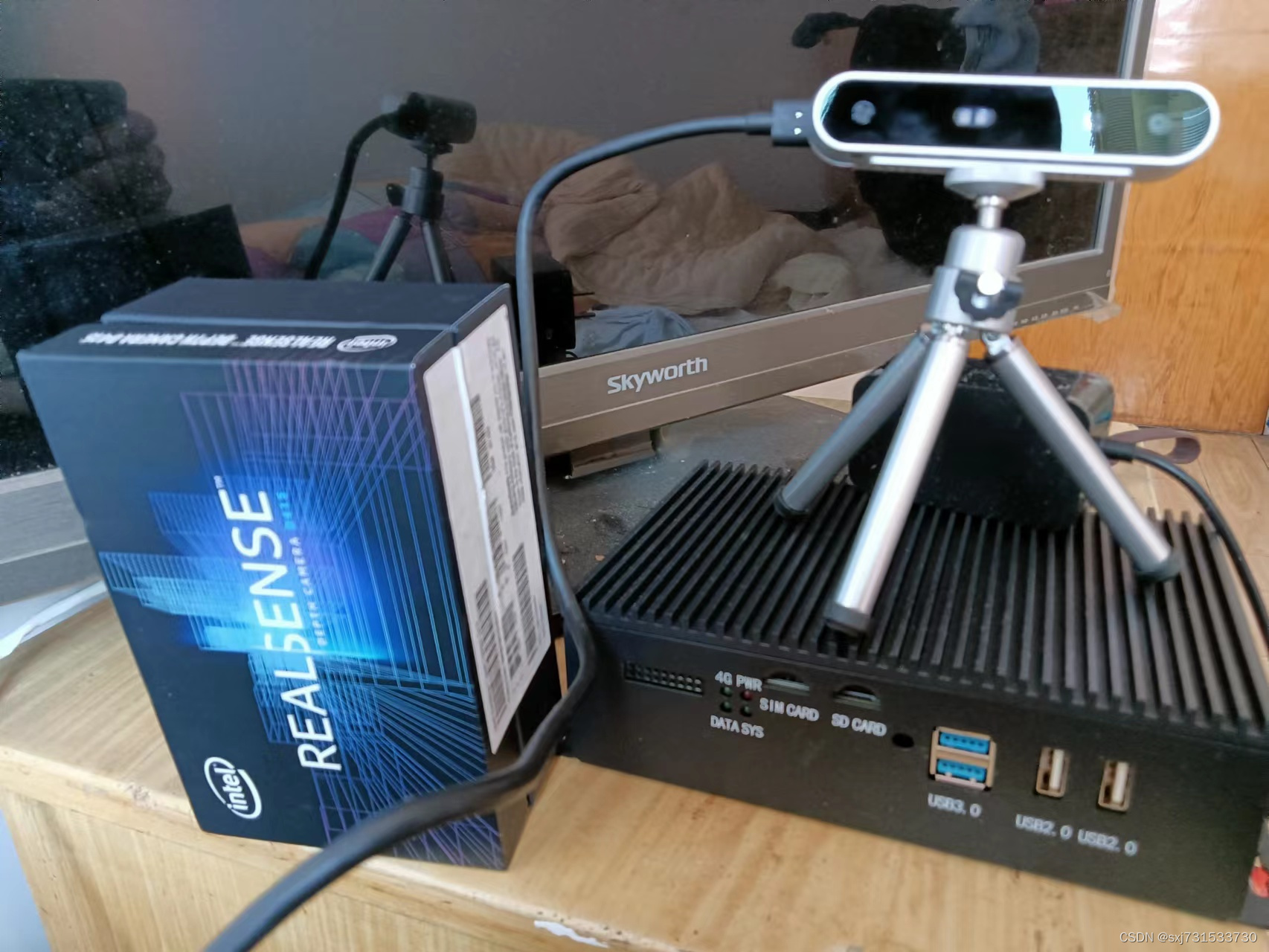
第一步:window11进行代码开发和测试,主要是测试距离,然后集成到自己的项目中
Releases · IntelRealSense/librealsense · GitHub
首先使用Depth.Quality.Tool.exe 进行相机标定
1)、首先保证相机是照射在一个光滑的平面上,我照射在一个电脑的屏幕上,该屏幕处于关电状态,然后打开标定软件,保证蓝色画面正处于标定状态,无其它信息显示,然后标定数据写入相机,即相机自动标定内外参数,不用手动标定板写入,还是蛮方便的
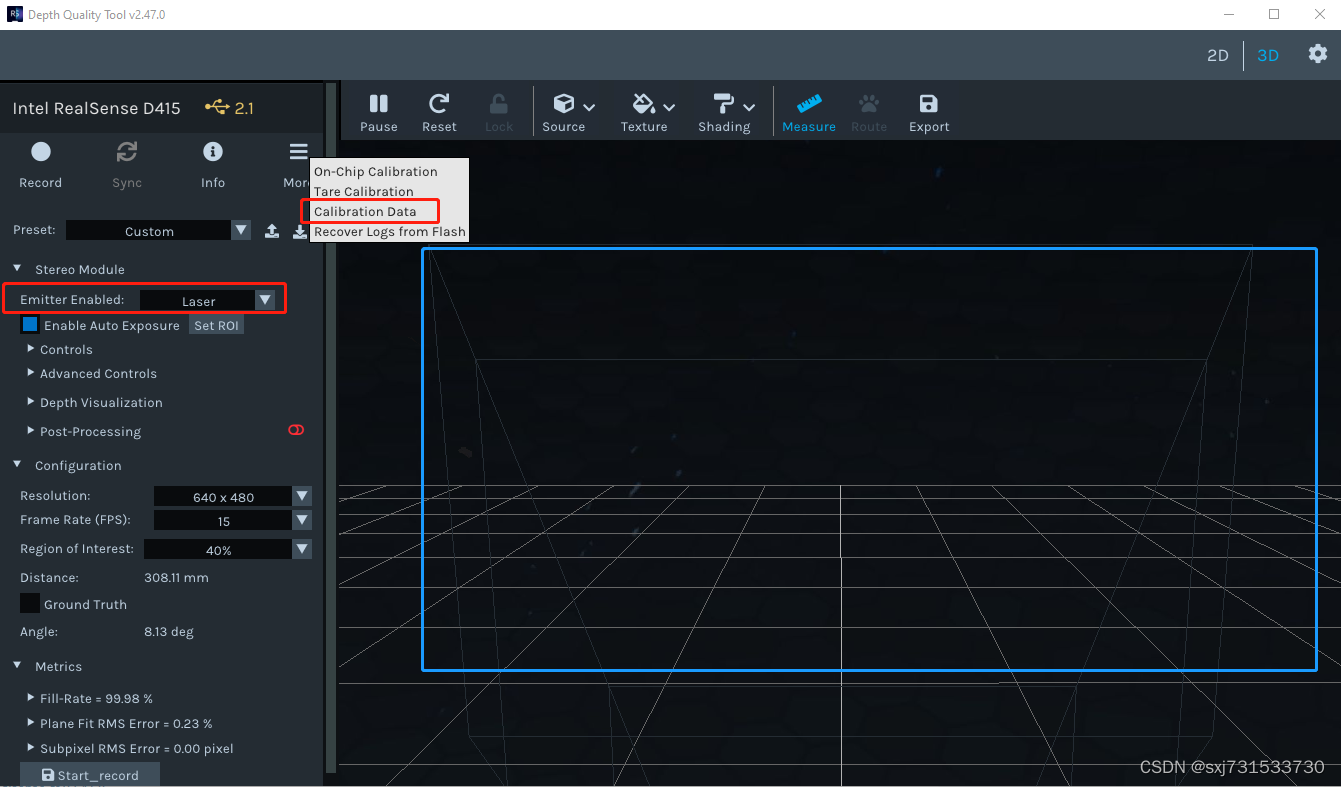

2)实测距离为30厘米左右
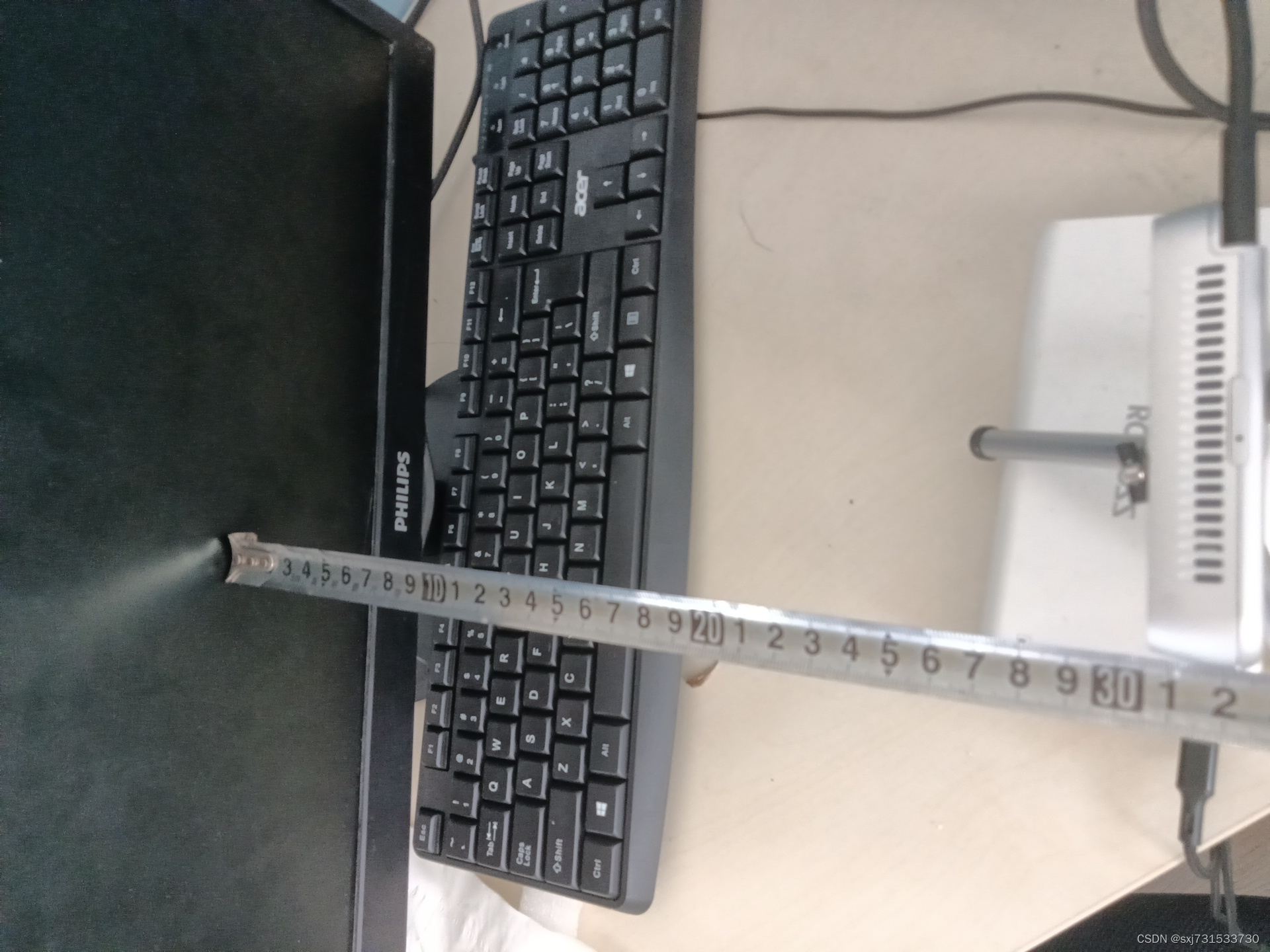
?软件测试距离308毫米=30.8厘米,还是蛮准的
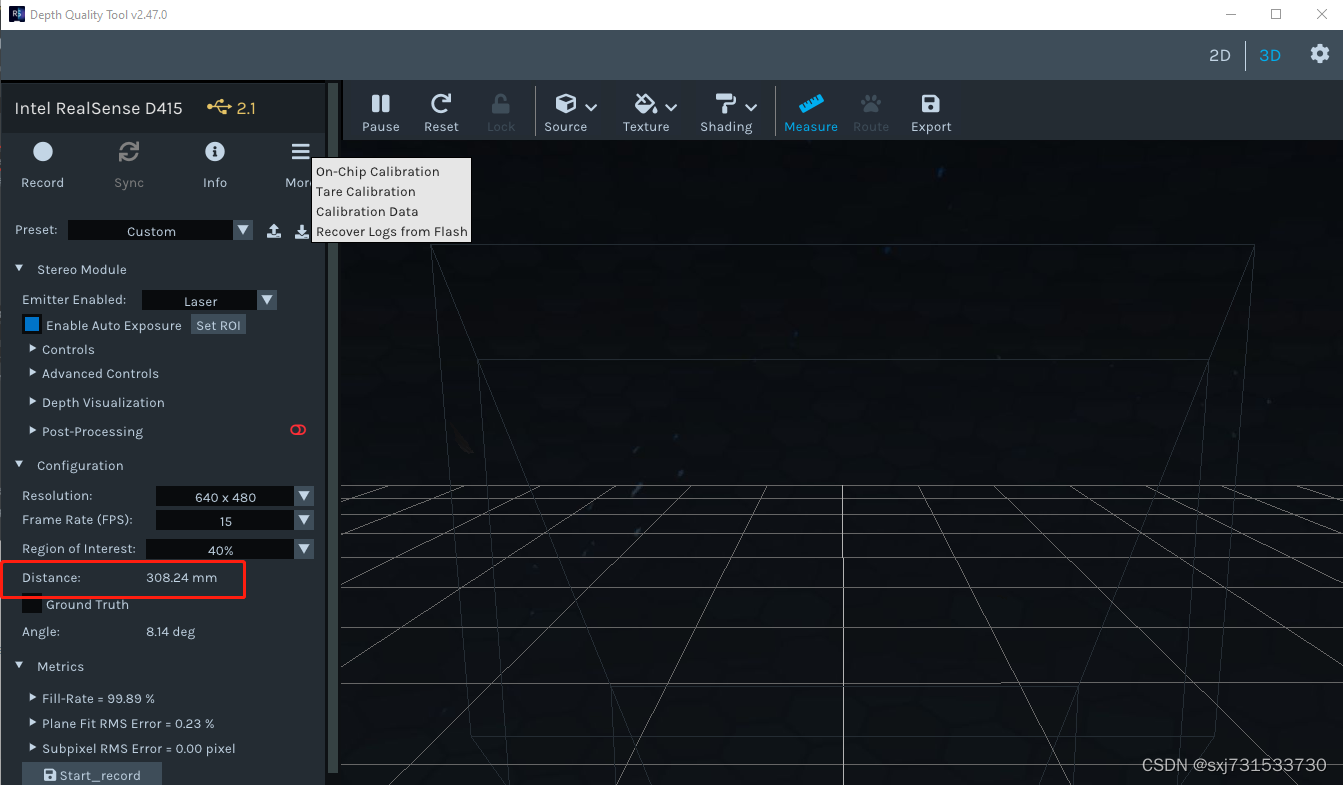
使用Intel.RealSense.Viewer.exe工具测试,也是如此将鼠标放在检测区域,测试距离仍然正确
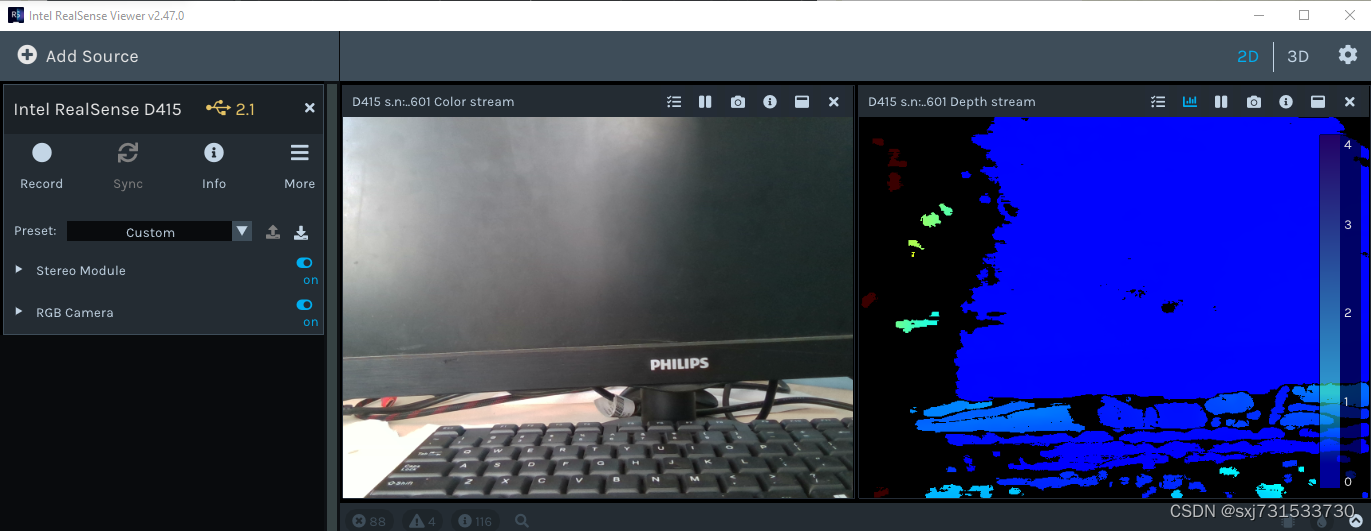
?第二步:写代码获取一下距离参数? 官网的例子?librealsense/wrappers/python/examples at development · IntelRealSense/librealsense · GitHub
F:\pyrealsense>pip3 install pyrealsense2测试代码(参考大佬的代码,链接参考附录,做过修改)
import pyrealsense2 as rs
import numpy as np
import cv2
pc = rs.pointcloud()
points = rs.points()
pipeline = rs.pipeline() # 创建一个管道
config = rs.config() # Create a config并配置要流??式传输的管道。
config.enable_stream(rs.stream.depth, 640, 480, rs.format.z16, 15)
config.enable_stream(rs.stream.color, 640, 480, rs.format.bgr8, 15)
# 使用选定的流参数显式启用设备流
# Start streaming 开启流
pipe_profile = pipeline.start(config)
align_to = rs.stream.color
align = rs.align(align_to) # 设置为其他类型的流,意思是我们允许深度流与其他流对齐
print(type(align))
cap = cv2.VideoCapture(0)
object_x=300 #修改成检测目标的中心点即可
object_y=250
while True:
frames = pipeline.wait_for_frames() # 等待开启通道
# ret, frame = cap.read() # ret 读取到图片为True 未读到图片为Falst
# frame = cv2.flip(frame, 1)
aligned_frames = align.process(frames) # 将深度框和颜色框对齐
depth_frame = aligned_frames.get_depth_frame() # ?获得对齐后的帧数深度数据(图)
color_frame = aligned_frames.get_color_frame() # ?获得对齐后的帧数颜色数据(图)
img_color = np.asanyarray(color_frame.get_data()) # 把图像像素转化为数组
img_depth = np.asanyarray(depth_frame.get_data()) # 把图像像素转化为数组
# img_color2 = cv2.cvtColor(img_color, cv2.COLOR_BGR2GRAY)
# Intrinsics & Extrinsics
depth_intrin = depth_frame.profile.as_video_stream_profile().intrinsics
color_intrin = color_frame.profile.as_video_stream_profile().intrinsics
depth_to_color_extrin = depth_frame.profile.get_extrinsics_to(color_frame.profile)
# 获取深度传感器的深度标尺
depth_sensor = pipe_profile.get_device().first_depth_sensor()
depth_scale = depth_sensor.get_depth_scale()
# 由深度到颜色
depth_pixel = [240, 320] # Random pixel
depth_point = rs.rs2_deproject_pixel_to_point(depth_intrin, depth_pixel, depth_scale)
color_point = rs.rs2_transform_point_to_point(depth_to_color_extrin, depth_point)
color_pixel = rs.rs2_project_point_to_pixel(color_intrin, color_point)
print('depth: ', color_point)
print('depth: ', color_pixel)
pc.map_to(color_frame)
points = pc.calculate(depth_frame)
vtx = np.asanyarray(points.get_vertices()) # points.get_vertices() 检索点云的顶点
tex = np.asanyarray(points.get_texture_coordinates())
i = 640 * 200 + 200
print('depth: ', [np.float(vtx[i][0]), np.float(vtx[i][1]), np.float(vtx[i][2])])
cv2.circle(img_color, (object_x, object_y), 8, [255, 0, 255], thickness=-1)
cv2.putText(img_color, "Distance/mm:" + str(img_depth[object_x, object_y]), (40, 40), cv2.FONT_HERSHEY_SIMPLEX, 1.2,
[255, 0, 255])
cv2.putText(img_color, "X:" + str(np.float(vtx[i][0])), (80, 80), cv2.FONT_HERSHEY_SIMPLEX, 1, [255, 0, 255])
cv2.putText(img_color, "Y:" + str(np.float(vtx[i][1])), (80, 120), cv2.FONT_HERSHEY_SIMPLEX, 1, [255, 0, 255])
cv2.putText(img_color, "Z:" + str(np.float(vtx[i][2])), (80, 160), cv2.FONT_HERSHEY_SIMPLEX, 1, [255, 0, 255])
cv2.imshow('rgb_frame', img_color)
cv2.imshow("depth_frame", img_depth)
key = cv2.waitKey(1)
if key == 27:
cv2.destroyAllWindows()
break
cv2.waitKey(0)
cv2.destroyAllWindows()
pipeline.stop()
测试结果
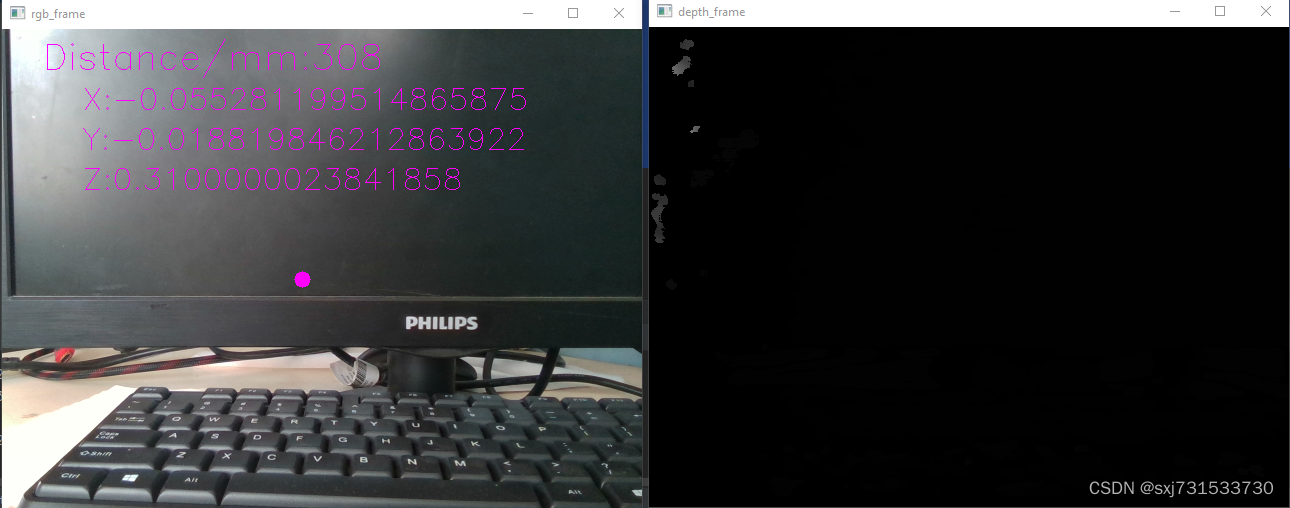
第三步:集成到自己项目中的效果,检测+测距,比双目的测距更为准确一些33、C++双目摄像头进行测距实验_sxj731533730的博客-CSDN博客_双目测距代码c++
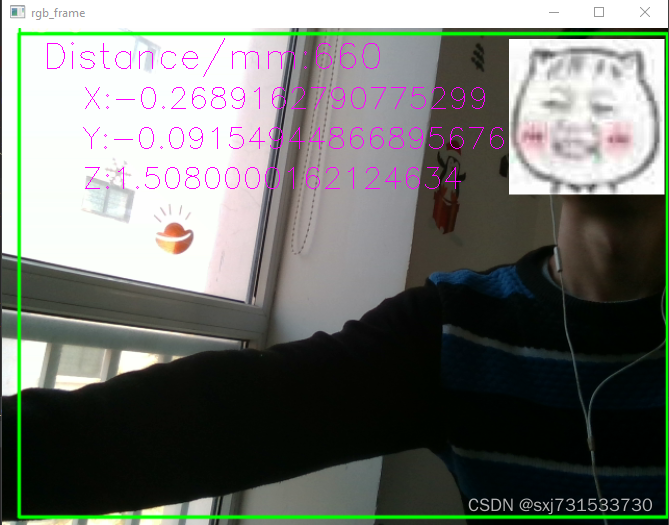
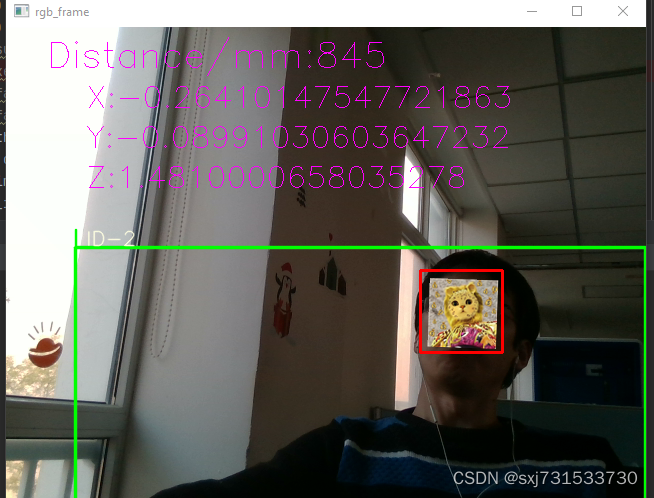
参考
GitHub - IntelRealSense/librealsense at v2.47.0
librealsense/wrappers/python/examples at development · IntelRealSense/librealsense · GitHub
Realsense D435i深度测距和普通摄像头单目测距的区别(附带可用实测代码)_手里有风的博客-CSDN博客_d435深度摄像头
